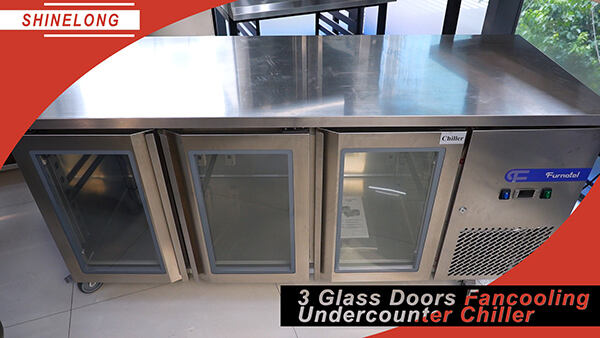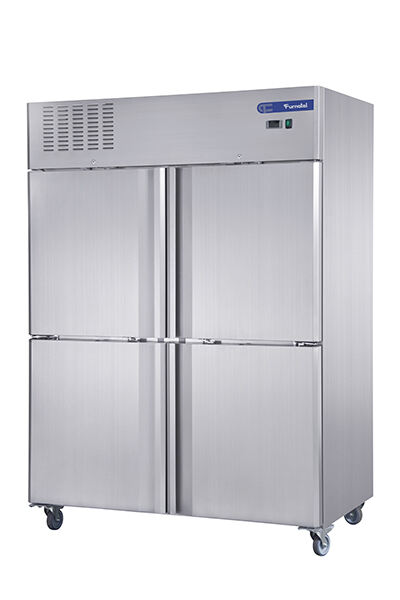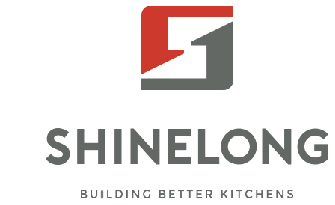News
The Role of Refrigeration Equipment in Food Preservation
In an era where food preservation directly impacts profitability and safety, commercial kitchens are only as reliable as their coldest corner. Every year, 1.3 billion tons of food are lost globally due to inadequate storage—a crisis that commercial refrigeration equipment is engineered to combat. From high-volume restaurants to hospital commissaries, the right refrigeration unit isn’t just a luxury; it’s the backbone of food and preservation strategies. This guide unpacks how cutting-edge systems like commercial blast chillers and reach-in refrigerators preserve flavor, texture, and ensure compliance. It also provides insights on how to choose the right refrigeration unit for your food service establishment, such as commercial fridge freezers and refrigeration equipment suppliers, to align with industry trends.
Cold Chain Integrity: Why Temperature Control Defines Food Safety
The science of food preservation methods hinges on one non-negotiable factor: precise temperature control. According to the FDA(Food and Drug Administration), bacterial growth accelerates exponentially between 4°C and 60°C—the “danger zone” where 48% of foodborne illnesses originate. Here’s where commercial refrigerator and freezer systems intervene:
- Rapid cooling: A commercial blast chiller like Shinelong's blast chiller series slashes cooling times, dropping cooked foods from 90°C to 3°C in 90 minutes, effectively halting bacterial proliferation.
- Zone-specific storage: Reach-in refrigerators with dual-zone compartments. For instance, Shinelong's FER14883DS400 model separates raw proteins from ready-to-eat items, reducing cross-contamination risks by 55%.
A 2024 Technavio study revealed that kitchens using NSF-certified refrigeration systems report 35% fewer health code violations, proving that equipment quality directly correlates with operational compliance.
Precision Engineering: How Modern Refrigeration Units Outperform Legacy Systems
Gone are the days of single-speed compressors and manual defrost cycles. Today’s commercial refrigeration equipment leverages IoT sensors and adaptive algorithms to maintain consistency. For instance, the furnotel refrigeration equipment employs real-time humidity control, adjusting airflow to keep the freshness of ingredients for 72 hours longer than conventional units.
In bakeries, this precision matters even more. A walk-in commercial refrigerator and freezer with ±0.5°C accuracy prevents dough over-fermentation—a critical factor for artisanal breads requiring exact proofing conditions.
Energy Efficiency: The Hidden Cost of Outdated Refrigeration
While upfront costs dominate purchasing decisions, energy consumption quietly drains budgets. Older commercial fridge freezer units consume 40% more power than ENERGY STAR-certified models. Compare:
| Equipment Type |
|
ENERGY STAR Model Savings | |
| Reach-in refrigerator | $1,200 | $480 (40% reduction) | |
| Walk-in freezer | $3,800 | $1,520 (via variable-speed compressors) |
Equipped with Embraco compressors, Shinelong's refrigeration equipment maintains precise temperatures while reducing energy consumption - a win-win for sustainability and profitability.
Modular Solutions for Evolving Kitchen Needs
The rise of ghost kitchens and hybrid dining models demands flexibility. Modular commercial refrigeration equipment allows kitchens to scale cold storage vertically. For example, Shinelong's modular refrigeration units can be easily configured to meet the specific needs of any kitchen, ensuring efficient use of space and optimal storage capacity.
Dry storage also benefits from innovation. Commercial refrigeration equipment for dry storage typically uses humidity-controlled cabinets to protect spices and grains from clumping. In the case of the Bangladesh Hospital Kitchen Project, Shinelong understood the importance of a robust food storage system in the entire kitchen area. We offered high-end refrigeration equipment, including walk-in coolers, humidity-controlled cabinets, reach-in freezers, undercounter chillers, and more.
FAQs
Q: What refrigerant is used in modern equipment rooms?
A: Most refrigeration equipment suppliers now phase out R-22 in favor of eco-friendly options like R-448A, which reduces global warming potential by 68%.
Q: How do upright freezers compare to walk-in units?
A: Commercial freezer upright models suit space-constrained kitchens, while walk-in commercial refrigerator and freezer systems offer higher capacity for bulk storage.
Q: What defines industrial refrigeration equipment?
A: The industrial refrigeration equipment market focuses on large-scale systems for meatpacking plants, whereas commercial units prioritize accessibility for daily kitchen workflows.
Refrigeration Equipment Comparison Table
| Application | Recommended Equipment | Key Feature |
|---|---|---|
| High-volume prep kitchens | Reach-in refrigerators (Furnotel) | Dual-zone temp control |
| Bakery cold proofing | Walk-in commercial refrigerator | ±0.5°C accuracy, humidity sensors |
| Emergency food storage | Commercial blast chiller (Fancooling Blast Freezer) | 90-minute rapid cooling cycle |
Choosing Your Right Refrigeration Partner
Choosing commercial refrigeration equipment isn't just about specs; it's about partnering with suppliers who truly understand your food preservation challenges. Shinelong goes beyond just selling equipment. We offer comprehensive after-sales programs, sending our professional engineering team to address any issues you might encounter with your freezer. Our goal is to ensure that your refrigeration system runs smoothly and efficiently.
For kitchens that prioritize sustainability, ENERGY STAR-certified units are a game-changer. These units not only reduce your carbon footprint but also qualify for utility rebates, making them a smart choice for both the environment and your budget. As the industrial refrigeration equipment market continues to grow at 6.2% annually (Grand View Research, 2025), staying updated on refrigerant regulations is crucial for long-term compliance.
Ultimately, your refrigerator is more than just a metal box. It's the silent guardian of your ingredients, your reputation, and your bottom line.
 After-Sales:
After-Sales:
 EN
EN
 AR
AR
 HR
HR
 NL
NL
 FI
FI
 FR
FR
 DE
DE
 EL
EL
 HI
HI
 IT
IT
 PT
PT
 RO
RO
 RU
RU
 ES
ES
 TL
TL
 ID
ID
 SL
SL
 VI
VI
 ET
ET
 MT
MT
 TH
TH
 FA
FA
 AF
AF
 MS
MS
 IS
IS
 MK
MK
 HY
HY
 AZ
AZ
 KA
KA
 UR
UR
 BN
BN
 BS
BS
 KM
KM
 LO
LO
 LA
LA
 MN
MN
 NE
NE
 MY
MY
 UZ
UZ
 KU
KU









